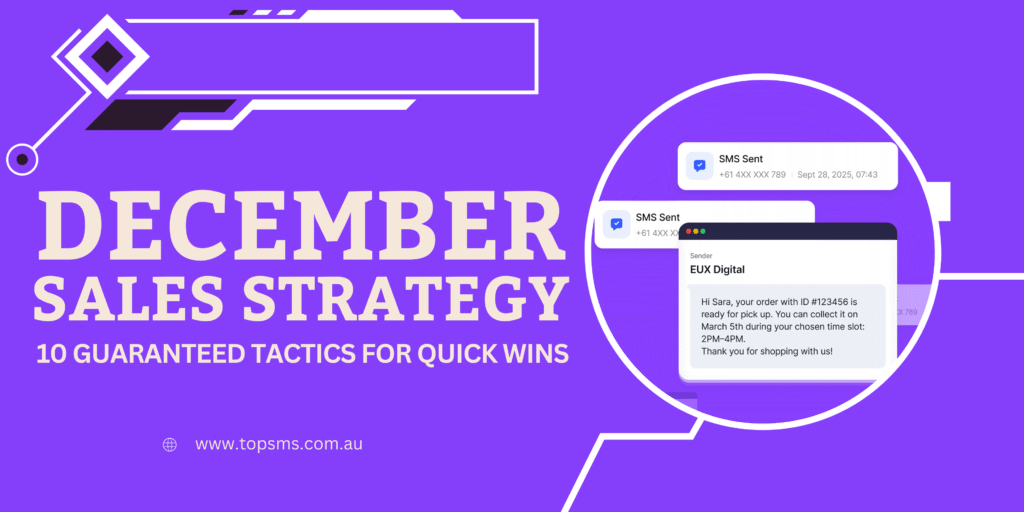December is not simply another trading month. It is an environment where consumer intent is pre-accelerated, comparison cycles are shortened, and switching costs decline. The consumer is not in early exploration. They are finalising. They are managing risk around delivery certainty, fulfilment timing, and post-purchase assurance. The implication for ecommerce operators is structural: marginal optimisation in this month has disproportionate contribution to both contribution margin and bottom-line EBITDA. In December, sales strategy is vital, friction does not only reduce conversion. It reallocates revenue to competitors. The businesses that protect their conversion pathway in December are not merely competing on marketing execution. They are competing on time compression, operational clarity, and direct communication efficiency. December is a performance environment where immediacy and certainty outrank creative value propositions.

1. Prioritise Delivery Certainty Above The Fold
Delivery is not a fulfilment outcome in December. Delivery is a value proposition. In this period the conversion bottleneck is rarely product desirability. The bottleneck is confidence regarding whether the product will arrive on time. Operators that surface dispatch timeframes, courier alignment, and final order cut-offs at the highest visual priority on product pages materially reduce cognitive friction. When delivery certainty is ambiguous, consumers pause. They re-compare alternatives. They defer. When delivery certainty is explicit, the conversion pathway shortens.
Operators should consider delivery communication as an information architecture item not merely a design element. Placement above price and above promotional mechanics is commercially logical because the user cannot calculate relative value if fulfilment reliability is unclear. December purchasing behaviour is not speculative. It is outcome-anchored. Velocity improves when risk is removed. surfacing fulfilment certainty directly improves the efficiency of every subsequent conversion lever.
2. Present Pricing As Absolute Dollar Reduction
During December comparison frequency is high. Consumers review parallel tabs, competitor SKUs, and near-substitutes with short dwell time. In this context percentage-based promotion framing requires mental conversion. Absolute dollar-based framing reduces cognitive load. Dollar-based pricing also produces a more direct comparative anchor between alternatives. The consumer can see the delta between “normal” and “December”. This reduces ambiguity.
Price transparency supports two outcomes simultaneously. First, it increases the salience of the offer relative to other pages under review. Second, it reduces the cognitive effort required to determine whether the price should be accepted. In high urgency periods, cognitive effort is commercially expensive. Minimising effort accelerates conversion.
3. Use Tiered Spend Incentives To Expand Average Order Value
In a normal period, basket expansion is often speculative. In December, basket expansion leverages pre-commitment. Consumers are already psychologically committed to the purchase outcome. The operator’s task becomes to influence the depth of commitment rather than the existence of commitment. Tiered spend structures do this efficiently. They create linear incentive pathways without diluting margin across the full SKU range.
Tiered spending mechanisms should be positioned in a manner that supports self-qualification. Operators should not rely on generic “volume discounting”. Instead they should define two or three spend steps aligned with standard basket profiles. December users value clarity. Transparent value progression expands average order value in a way that is both operationally manageable and commercially rational.
4. Activate Local Pickup As A Competitiveness Lever
Fulfilment performance is increasingly constrained in late December. Carrier networks tighten, delivery windows compress, and cut-offs become harder to accommodate. As a result, proximity becomes a strategic differentiator. Local pickup converts strongly in dense metro postcodes because it removes delivery uncertainty entirely. It restores control to the consumer.
Local pickup should not be positioned merely as a convenience feature. In December it is a risk removal mechanism. Operators who run metro gap messaging based on postcode targeting materially increase conversion efficiency in this phase. Local pickup functions as an alternative delivery channel, not an operational footnote.
5. Re-Expose Warm Cohorts At Short Cadence
In December the incremental value of a warm cohort is significantly greater than the incremental value of net new traffic. Users who visited product pages, added items to cart, or initiated checkout within the last 7 to 21 days represent re-activatable value. The strategic question is not whether to target them. The question is cadence. December requires shorter cadence.
Re-exposure every 24 to 72 hours is a rational interval because decision cycles are compressed. The consumer is not learning. They are selecting. High frequency retargeting in this window is not a branding activity. It is a transaction completion activity. It increases throughput across the final stage of the funnel.
6. Execute Product-Specific Messaging Not Seasonal Abstractions
Generic holiday framing underperforms during December peak because consumers in this period are not in thematic mindset. They are in operational and outcome-driven mindset. Messaging based on specific SKUs, complimentary bundles, or precise value stacks aligns directly to that behaviour.
Operators should therefore adopt product-level precision. Seasonal abstraction delays decision alignment because “holiday sale” does not clarify why the consumer should transact now versus later. When the consumer already knows what they intend to purchase, specificity is the most efficient mechanism to convert intent.
7. Transition To Immediacy Channels In The Final 10 Days
Email is structurally disadvantaged in the final 10 days before Christmas because inbox load is elevated, filter thresholds tighten, and attention tolerance decreases. During this period the communication channel must match the speed of the decision cycle. SMS bypasses the performance constraints of email. It delivers visibility quickly and predictably.
Operators should treat communication channel selection as a capacity alignment exercise. When delivery cut-offs are measured in days not weeks, the channel must reflect that operational reality. SMS therefore becomes an operational advantage not a creative choice. It materially increases the probability that the consumer sees the message at the moment where they are actively allocating budget.
8. Apply Segmentation Based On Spend And Recency
Segmentation during December is not a data science project. It is a basic resource allocation discipline. Operators should apply segmentation based on value and recency because those two variables correlate most directly with conversion. Total spend, historical order count, last session timing, and postcode density provide sufficient signal to improve targeting without requiring additional data infrastructure.
Segmentation must be deployed not as a reporting exercise but as a channel execution rule. The objective is to allocate the most immediate messages to the most commercially relevant cohorts. In December, targeting precision strengthens the conversion funnel by reducing wastage and increasing throughput. It is not complexity. It is discipline.
9. Use SMS For Stock Pressure, Cut-Off Alerts And Transactional Triggers
The most influential decision drivers in December are time-linked not persuasion-linked. Inventory scarcity, last-order cut-offs and short window price deltas represent triggers, not creative campaigns. SMS is structurally aligned with trigger-based behaviour because it reduces time between message and observation.
The effectiveness of SMS in this phase is based on alignment with the consumer’s operating mode. If the message must be seen quickly, and if the message contains time-sensitive information, SMS is the rational channel. It is not an optional supplement. It is the most appropriate intervention mechanism for short-cycle decision environments.
10. Operationalise SMS Through A Native WooCommerce SMS Plugin For Efficiency
In the Australian market, SMS deployment inside WooCommerce can be operationalised without engineering overhead. TopSMS functions as a native plugin rather than a third party connector. Installation, sender ID activation, segmentation and sending are handled inside WooCommerce with no code, no middleware and no API configuration. This reduces friction and increases execution velocity.
Native integration also lowers total cost of ownership. Per message rates are low, management is centralised within the commerce environment, and reporting aligns to existing operational dashboards. For operators in Australian retail, routing via local carriers such as Telstra, Optus and Vodafone also ensures consistent deliverability and identity compliance under ACMA expectations. The outcome is operational simplicity. SMS becomes a standard execution mechanic rather than an additional platform overhead.
Conclusion
December conversion performance is determined by the operator’s capacity to eliminate friction, communicate certainty, and align messaging with compressed decision cycles. The ten levers above represent structured interventions that increase throughput in high intent environments. SMS is not a marketing novelty. It is the communication mechanism that best supports December’s decision dynamics. For WooCommerce merchants, a native deployment such as TopSMS provides a low friction pathway to execute these levers efficiently.


